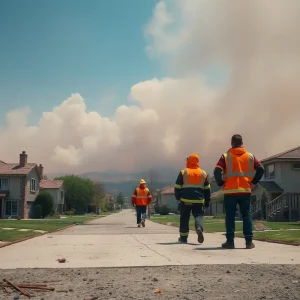Austin Area Air Quality No Longer Meets EPA Standards
The Environmental Protection Agency released new, stricter air pollution standards, and the Austin area is now considered to have air quality levels below acceptable standards. This update marks the first change in standards since 2012.
New Standards and Regulations
The new standards set by the EPA dictate that regions with nine or more micrograms of fine particulate matter per cubic meter of air are categorized as having unhealthy air quality. Previously, Austin met the standard of 12 micrograms per cubic meter, but now it must reduce the levels of fine particulate matter, or soot, in the air to comply with the updated regulations.
Understanding Fine Particulate Matter
Fine particulate matter consists of microscopic pollutant particles present in the air. These particles can originate from various sources such as power plants and car emissions in the Austin area. According to Lea Hildebrandt Ruiz, an associate professor of chemical engineering, fine particulate matter poses significant health risks as smaller particles can penetrate deep into the lungs and bloodstream, potentially leading to cancer and increased mortality rates.
Shift in Focus
Capital Area Council of Governments’ air quality program manager, Anton Cox, highlighted that historically, the city and its surrounding areas prioritized reducing ozone emissions. With the new EPA standards, the focus has shifted to monitoring particulate matter levels and identifying strategies to lower these levels. Cox mentioned that additional particulate matter monitors have been acquired to facilitate this process.
Implementing Solutions
While the area has a two-year window before the formal nonattainment designation is issued by the EPA, efforts are underway to implement voluntary actions to safeguard public health and economic growth. The projected timeline to meet the new standard is 2032, with estimates suggesting that compliance could prevent thousands of premature deaths and lost workdays.
Collaborative Efforts
Cox emphasized the importance of community engagement and cooperation with state and federal agencies to formulate a long-term plan to achieve compliance swiftly and efficiently. The ultimate goal is to take proactive measures and identify immediate actions to align with the EPA’s regulations.










